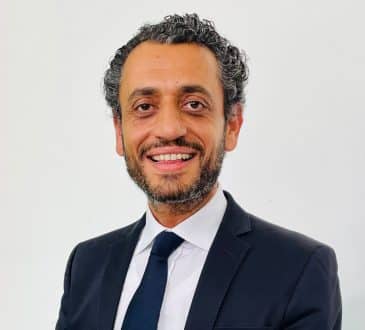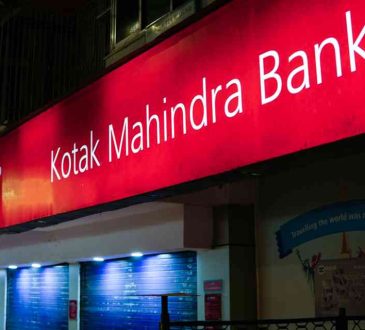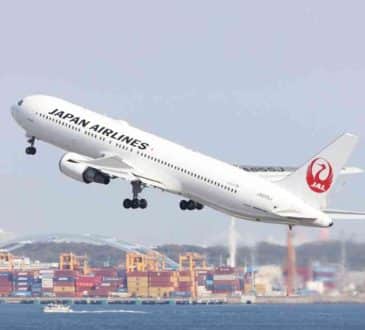People Power: Maximizing Value through Human Capital Strategies

Dear friends,
I’m back after a long absence due to professional commitments. It’s a pleasure to meet you again, and I’d like to thank you for the continuous support you offer to my work. During my absence, I received your messages, and in many of them, you asked me to write about a controversial topic, human capital and the “investment” in it.
Indeed, I also consider human capital very important, and such an analysis was in my intentions. To write this article, I dealt with the subject in depth, and I’d like to ask you to forgive me for its size. I assure you, however, that it was necessary to describe in detail all aspects of the subject for it to be fully understood. In the next period, I’ll publish other articles related to the “environment” of this analysis. I hope you find exciting answers …
Thank you!
Human Capital refers to the collective skills, knowledge, talents, and abilities possessed by the individuals that make up the workforce of an organization. Unlike physical capital, such as machinery or financial capital such as cash reserves, human capital cannot be owned – it resides within people. However, when nurtured and developed properly, human capital can generate immense value for a business.
This “type” of capital encompasses both the implicit and explicit knowledge employees hold. Tacit knowledge includes soft skills, experiences, and creative abilities that may be difficult to articulate or transfer. Explicit knowledge consists of the hard technical skills and qualifications an individual has attained. By having the right people in place and ensuring they can optimally apply their human capital, a company gains a competitive advantage.
Classifying employees as human capital recognizes people are long-term strategic investments, not just transactional costs. Viewing the workforce this way shifts focus toward actively growing and retaining top talent through training, development programs, fair compensation, and support for work-life balance. When supported to reach its full potential, the combined human capital within an organization becomes one of its most valuable intangible assets.
Maximizing the value derived from an organization’s human capital is crucial for sustainability and growth. When employees are empowered and invested in reaching their full potential, they become more engaged, productive, and innovative. This leads directly to increased profitability, better customer satisfaction, and expanded competitive differentiation. By capitalizing on the talents, skills, and knowledge within the existing workforce, costs can also be decreased through lower turnover and reduced training overhead.
Investing in human capital pays dividends not just for the present, but long into the future as well. Employees who feel valued and developed will remain with an organization longer, retaining crucial tacit knowledge and building upon their skills over time. This institutional memory and expertise are invaluable, especially as economic conditions and industry trends change. It also cultivates a talent pipeline for succession planning and future leadership roles.
At a macro level, businesses that serve as employers of choice see myriad benefits from this strategic investment. Enhanced reputation as a great place to work expands the ability to attract and retain top candidates. A talented, engaged workforce signals to clients and partners an organization’s commitment to excellence. This boosts credibility, forging strategic relationships that further generate value over an extended period.
Several key components make up an organization’s human capital. Training and education work to enhance the explicit knowledge and technical skills of employees. Development programs help workers grow their careers and prepare for future roles. Performance reviews provide feedback to maximize potential. Compensation and benefits retain top performers and attract new talent. Company culture and job satisfaction influence engagement levels. All of these components interact to define an organization’s human capital proposition.
To maximize return on human capital investment, the definition requires a holistic view of the workforce. It is not enough to focus solely on hiring talented individuals – development, culture and retention are equally critical. The combined makeup of responsibilities, experience, compensation, training opportunities, and work environment all shape the experience and output of employees. Truly optimizing human capital involves alignment across recruitment, learning & development, performance management, compensation, and culture practices.
By holistically understanding and actively managing these components to motivate employees and uphold their well-being, organizations can greatly enhance the value derived from their single greatest asset – their people. With the right definition and strategies in place, an organization’s human capital becomes a sustainable competitive advantage.
Treating human capital merely as an operational expense ignores its potential as a true strategic asset. Forward-thinking organizations recognize that nurturing employee skills, knowledge, and diversity is a unique resource to outperform competitors. With this perspective, human capital becomes integrated into the central strategic planning process. Investment decisions consider how initiatives like learning programs or flexible work policies will cultivate the workforce asset long-term.
Seeing human capital strategically opens opportunities to maximize its role across an organization. Beyond traditional HR functions, this asset can directly impact product development, customer relationships, and operational efficiency. Employees are empowered with growth opportunities that align their skills with evolving business priorities. This strategic mindset cultivates employee ownership in the company’s success.
Strategic human capital also strengthens resilience. A skilled, engaged workforce is better equipped to navigate challenges and reinvent as market needs change. They complement technology and infrastructure assets with problem-solving abilities. Treating people as strategic partners ensures organizations maintain their competitive edge by continuously developing their most sophisticated and adaptable asset – their human capital.
Recruitment is a crucial process for acquiring and developing new talent that aligns with an organization’s human capital strategy. Successfully attracting top candidates requires positioning the company culture and opportunities to maximize long-term engagement and retention. Beyond competitive compensation and benefits, recruitment focuses on communicating career growth potential through learning, mobility, and impactful work. By casting a wide net to diverse pools of talent, recruitment expands an organization’s human capital capabilities.
Once new hires are on board, the acquisition process continues. Robust onboarding socializes newcomers to company values and aims to quickly integrate them as productive members of the workforce. Mentorship and development planning ensures employees optimize the contribution of their skills from day one. Transition touchpoints maintain career momentum to retain new talent long-term as strategic human capital assets.
As business needs change, continuous recruitment enhances an organization’s adaptive capabilities through its human capital. A dynamic talent pipeline complements existing skills and furthers diversity of perspectives. Staying active in the talent market requires consideration across all human capital touchpoints such as culture, opportunities for impact, and career mobility to maintain a compelling value proposition that fuels sustainable recruitment success.
Training and development represent a core investment to maximize the value of human capital over time. By cultivating employees’ hard and soft skills through tailored programs, organizations ensure their workforce remains agile and positioned for emerging responsibilities. Learning opportunities take many forms, from formal courses to on-the-job mentoring, project-based development, and professional memberships. The most effective strategies align personnel goals with business objectives.
Continuous skill development deepens expertise while gaining new competencies, keeping human capital adaptable. It also boosts engagement and retention by showing career paths are supported. Training evaluation and tracking progress maintain accountability while allowing individuals to overachieve and be rewarded. Organizations then capture emerging skills that may lead future strategic initiatives.
Prioritizing lifelong learning as a shared value creates a virtuous cycle. Employees are empowered to maximize their potential and economic value. Simultaneously, their expertise fuels innovative solutions and organizational growth. The symbiotic relationship between training investments and reciprocated performance strengthens human capital as a sustainable competitive advantage.
An organization’s culture profoundly shapes how human capital creates value. A positive, supportive culture where employees feel invested in the company’s success enhances recruitment, job satisfaction, and retention. It fosters motivation, creativity, and risk-taking that spur innovation. Toxic cultures undermine talent attraction and productivity while wasting resources on turnover.
Subcultures can galvanize groups but may stifle cooperation. Alignment across the organization optimizes impact through shared objectives. Continuous feedback maintains cultures centered around human capital. Culture sends cues on developing skills and empowering employees. Bottom-up input allows cultures to adapt to talent’s needs.
Cultivating intrinsic motivation optimizes empowerment inspiring discretionary effort fueling business success. Autonomy, purpose, and growth unlock human potential in individual careers and organizational capabilities. A culture emphasizing lifelong learning ensures long-term value from strategically managing the greatest asset. Feedback ensures cultures sustainably motivate talent toward collective goals.
Several strategies can foster a positive work environment that engages human capital. Communicating the company’s mission and values creates an understanding of how each role contributes. Recognition programs and a just rewards system motivate high performance. Promoting diversity and inclusion unleashes new ideas from the representation of backgrounds. Encouraging work-life balance and flexibility improves well-being. Soliciting regular participation in decision-making cultivates investment and ownership.
Training managers to empower their teams and address concerns effectively builds trust. Surveying engagement gauges challenges and satisfaction. Action plans address issues while celebrating strengths. Career development discussions enhance motivation through articulated paths. Succession planning preserves tacit knowledge and eases transitions. Rotational programs expand perspective and collaboration across roles.
As cultures shift, continuous reinforcement maintains positivity. New initiatives adapt strategies to evolving workstyles. Communicating transparency on challenges humanizes leadership while demonstrating accountability. Community building through social activities fosters camaraderie alleviating potential isolation. Prioritizing human capital through such measures creates resilience enabling peak performance.
Building long-term relationships with human capital requires cultivating an environment of mutual trust and respect. Regular communication that provides transparency into organizational initiatives and affirms individual value and contributions fosters stronger bonds between employees and leadership. Offering career development opportunities that allow employees to grow their skills and advance within the company demonstrates a commitment to their long-term success.
Meaningful recognition and reward programs that go beyond compensation appreciate extra efforts and reinforce desired behaviors. Flexible work policies that empower work-life balance create goodwill. Surveying employee sentiments and acting on feedback maintains a responsive culture. Mentorship programs pass expertise across generations while facilitating knowledge transfer. Community engagement strengthens shared purpose beyond work.
Long-term focus on human capital helps weather challenges as priorities change. It attracts talent seeking stability and career trajectory. Retention of institutional memory preserves competitiveness as skilled employees steadily compound their value. Trust built over time buffers resignations even during uncertainties while motivated networks influence future hiring. Holistic nurturing of the employment experience and relationships underscores value as a career partner, not a transient job.
Employee satisfaction is directly linked to positive business outcomes. Satisfied employees are engaged, productive members of the team who feel invested in the organization’s success. They are less likely to seek other opportunities, saving recruitment and training costs associated with turnover. Retaining talented staff ensures institutional knowledge is preserved and client relationships are strengthened over the long term.
Satisfied employees also provide excellent customer service, building brand loyalty. They act as champions, referring new clients. In contrast, dissatisfied workers cannot deliver quality experiences and may actively discourage potential customers. Poor staff morale spreads negativity, harming company culture and future talent pipelines.
Regular listening allows understanding of workplace pain points early on. Addressing concerns like compensation, career growth, leadership or work-life balance maintains high retention rates. An analysis of satisfaction metrics helps recognize top performers for increased motivation and pinpoint problem areas for prompt solutions. Prioritizing this important asset leads to performance advantages like productivity, customer satisfaction, and profitability. Overall, satisfied employees must be among the top considerations for business success.
Organizations need to establish key performance metrics to gauge the success of their human capital strategies and initiatives. Common metrics include retention rates, which indicate how well the company is retaining valuable talent over time. Turnover rates also provide insight, with lower turnover suggesting higher employee satisfaction. Training metrics like participation rates and post-training evaluation scores show how well learning opportunities are being delivered and received.
Revenue per employee is a useful metric that links human capital directly to profitability. Metrics like units produced or issues resolved per employee capture productivity. Employee Net Promoter Score or a similar employee satisfaction survey gauges worker engagement and loyalty. Diversity metrics provide visibility into building an inclusive culture. Benchmarking metrics against industry averages and past performance helps assess progress over time.
Leading companies also track “softer” metrics like employer brand health and workplace culture. Regular pulse surveys invite anonymous feedback, while enterprise social networking analytics and internal communications scans uncover workforce sentiment in real-time. Linking human capital metrics to overarching business goals demonstrates an impact on priorities like customer experience, innovation, and growth. With the right metrics, organizations can measure success and identify opportunities to further optimize their human capital strategy.
To truly understand if human capital strategies are effective, organizations need to establish metrics for evaluating impact over time. Key performance indicators should measure outcomes related to the acquisition, development, retention, and performance of talent. Metrics like time to fill open roles, recruitment costs, learning participation rates, and turnover provide insight into acquisition and development efforts. Employee surveys spanning areas like engagement, satisfaction, and enablement offer subjective indicators.
Linking human capital metrics to financial and operational outcomes shows true value creation. Correlating training investments to productivity, quality, or sales metrics demonstrates a return on those development dollars. Associating retention improvements with reduced replacement costs or increased revenue per employee illustrate worthwhile strategy results. Benchmarking internally and against industry peers highlights relative performance uplifts.
Regular audits examine the alignment between strategies, tactics, and desired business results. Feedback from managers, employees, and key stakeholders uncovers strategy gaps or changing priorities. External environment scans identify emerging human capital best practices. Using both quantitative and qualitative evaluations, organizations can effectively gauge progress in achieving their strategic people objectives, as well as refine approaches ongoing for the greatest impact. Continuous assessment ensures talent strategies adapt optimally over time.
In today’s hypercompetitive, fast-paced business environment, an organization’s true competitive advantage lies with its people. The knowledge, skills, innovation, and customer-centric service that employees provide differentiate businesses and drive outcomes. Consequently, ongoing investment in human capital development has never been more crucial.
Valuing employees as strategic assets to be cultivated and empowered, rather than simply costs to be minimized, yields significant returns. Investments in training, career mobility, progressive culture, and workplace well-being strengthen employee engagement and satisfaction. Retention of top performers preserves institutional knowledge while attracting new talent further enhances capabilities.
Most importantly, optimizing human capital generates exponential impacts that manifest throughout an organization. The exponential influence of motivated teams who consistently deliver exceptional customer experiences and groundbreaking innovations cements loyalty and accelerates growth. For businesses seeking sustainable competitive differentiation and profitability, proactively nurturing people power through ongoing human capital investment must be a top strategic priority.
Have you read?
Rebranding Countries: 17 Names That Redefined The Nation’s Identity.
These Are The Largest Warships In The World.
Ranked: Most Powerful Weapons in the World, 2023.
Ranked: Countries with the largest active combat helicopter fleet worldwide in 2023.
Ranked: Most powerful air forces in the World, 2023.
Report: Strongest Economies in The World in 2023.
Add CEOWORLD magazine to your Google News feed.
Follow CEOWORLD magazine headlines on: Google News, LinkedIn, Twitter, and Facebook.
This report/news/ranking/statistics has been prepared only for general guidance on matters of interest and does not constitute professional advice. You should not act upon the information contained in this publication without obtaining specific professional advice. No representation or warranty (express or implied) is given as to the accuracy or completeness of the information contained in this publication, and, to the extent permitted by law, CEOWORLD magazine does not accept or assume any liability, responsibility or duty of care for any consequences of you or anyone else acting, or refraining to act, in reliance on the information contained in this publication or for any decision based on it.
Copyright 2024 The CEOWORLD magazine. All rights reserved. This material (and any extract from it) must not be copied, redistributed or placed on any website, without CEOWORLD magazine' prior written consent. For media queries, please contact: info@ceoworld.biz
SUBSCRIBE NEWSLETTER








